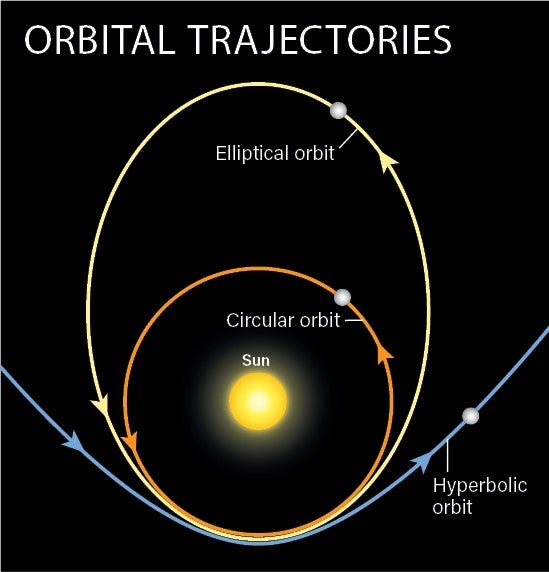A: We recognize that an asteroid or comet is interstellar from its trajectory. The trajectory of an object is computed by comparing precise measurements of its changing position on the sky to the possible trajectories that account for all known forces acting on it, such as the gravity of the Sun and the planets. The calculated trajectory we use is the one that best matches the object’s observed motion.
Objects that reside within our solar system (planets, asteroids, and comets) all move approximately along closed elliptical orbits, each with a perihelion (closest point to the Sun) and an aphelion (farthest point from the Sun). Objects move fastest at perihelion, and then solar gravity slows them down as they try to race away from the Sun. Eventually, they reach aphelion and solar gravity brings them back closer to the Sun again.
Despite being computed the same way as the trajectory of asteroids and comets, the trajectory of an interstellar object is different. It is essentially an open-ended hyperbola with a perihelion point but no aphelion. Interstellar objects have such high velocities that, on the outbound leg, the Sun’s gravity is not strong enough to slow them down completely. Therefore, the trajectory shows that the object originated somewhere else in the universe, traveled through interstellar space, and entered the solar system. The object then reaches perihelion before eventually leaving the solar system.










